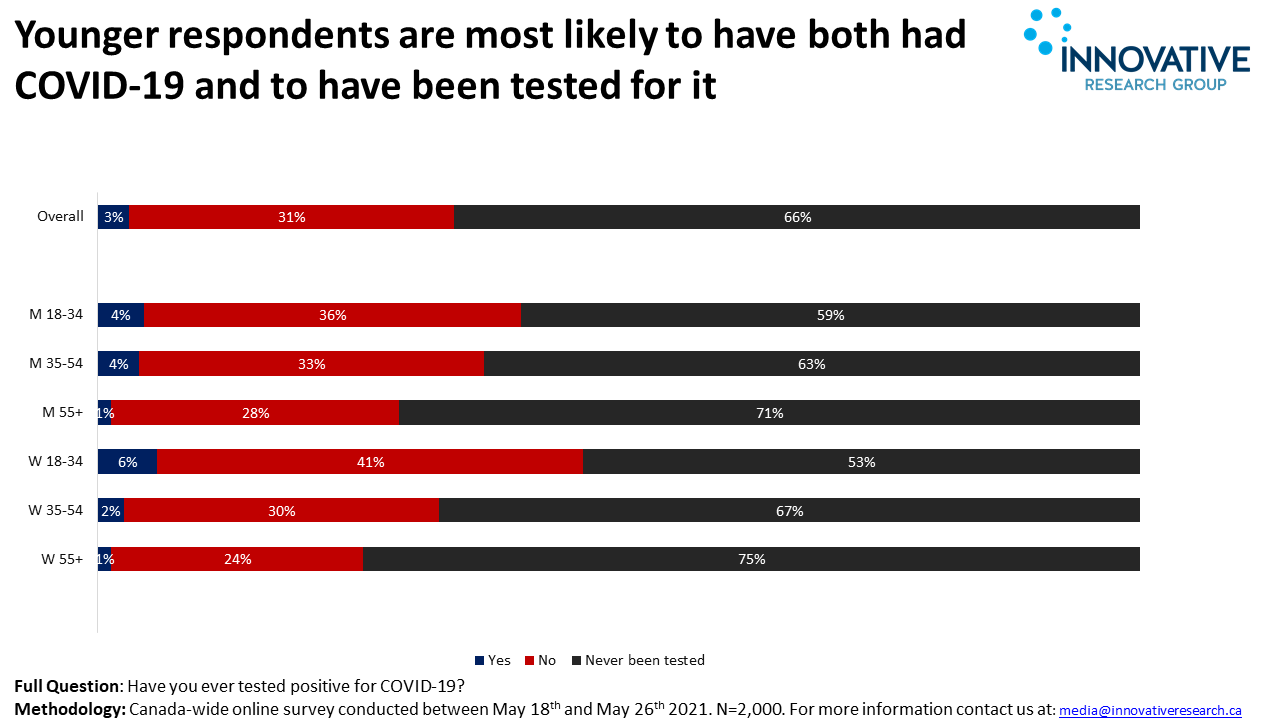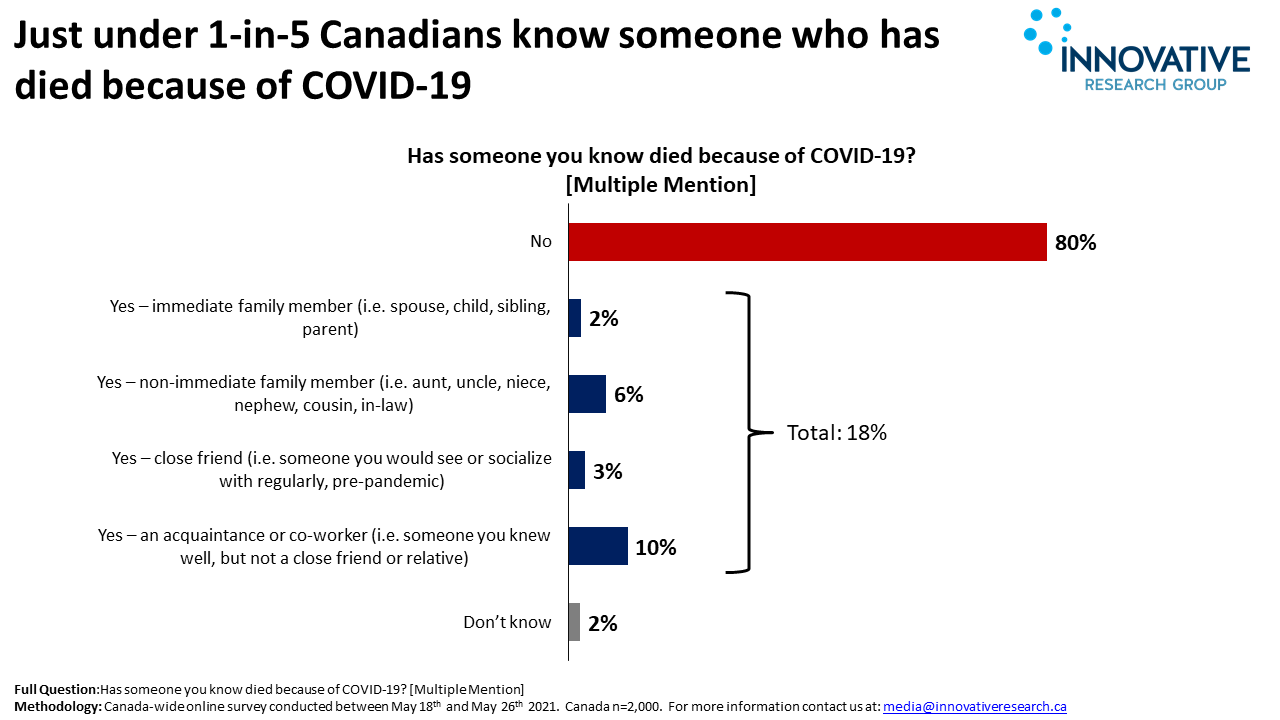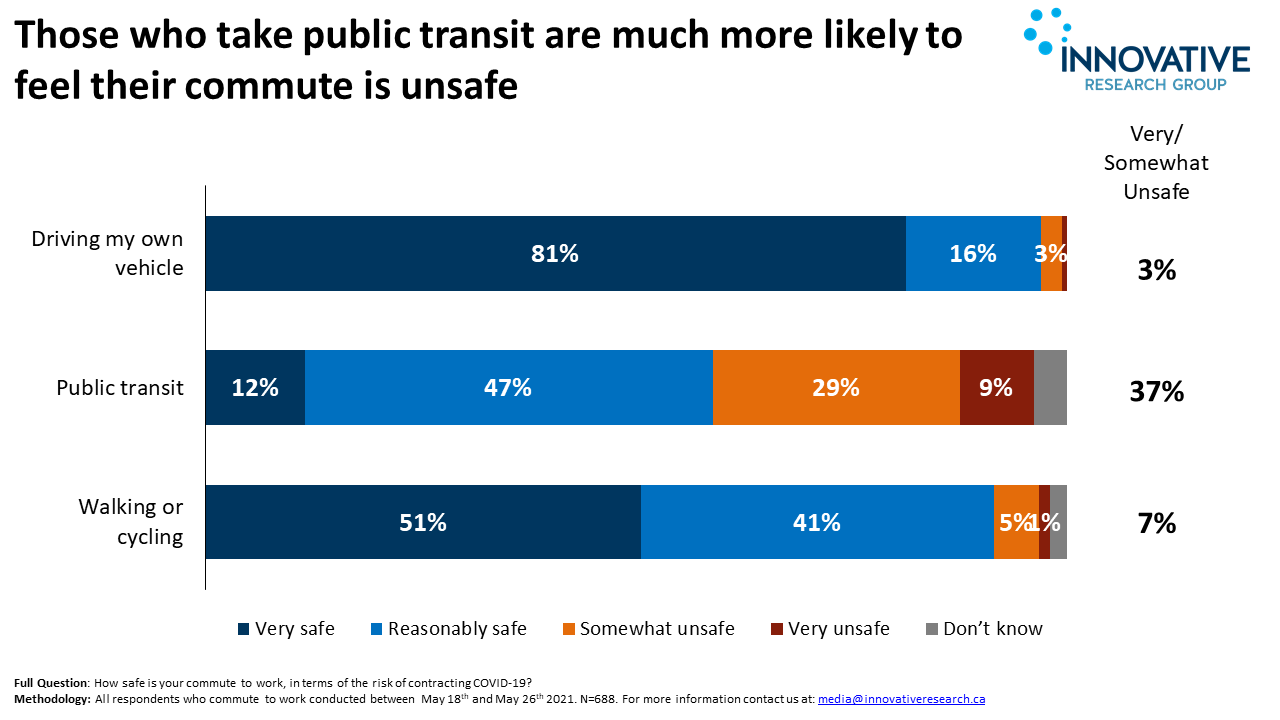
Most Canadians remain untouched by the direct health impacts of COVID-19 while memories of earlier economic impacts are fading. These are the findings of a new INNOVATIVE online survey conducted from May 18th to May 26th, 2021, with a weighted sample size of 2,000 Canadian residents. The survey looked at health experience and work experience, including assessments of safety at work and on the commute and paid leave coverage.
Few Canadians report experiencing COVID themselves. While 19% say they have experienced COVID symptoms, just 3% have actually tested positive for COVID. People under 55 are more likely to have experienced COVID-19 than older respondents with students and people living with children in a house most likely to have experience COVID-19.

Most Canadians now report knowing someone who has tested positive. People under 35, particularly young women, are more likely to know someone who had COVID-19. Consistent with the age pattern, students and people with children are more likely to know someone with COVID-19. Alberta and Prairie respondents are also more likely to report knowing someone with COVID.
Fortunately, 80% do not know anyone who has died. However, half of those who do know someone who died have lost lost a family member or close friend. Experience with death is fairly constant across work and home life experiences and among age groups but Prairie respondents are more likely to report knowing someone who died.

One surprising finding is that fewer people are reporting that they or anyone in their household have been laid off, lost hours, or had a wage reduction as a result of the outbreak. Logically, this should not be the case as over time new people are added to the previous total of people experiencing economic dislocation. However, previous work has shown that most people who experienced a negative economic impact felt government support kept them whole. While some of this decline in recalling a negative economic impact may be due to people assuming the question is about recent impacts, it is also likely that memories of last spring’s impacts are fading.
COVID-19 has obviously changed how we work. Half of Canadians say they have been able to work from home all the time (34%) or often (16%). One third (34%) have always had to go into work. There have also been changes in our in-person workplaces. In June 2020, 49% of all workers said they often or always had to interact with people “face-to-face”. That number is now down to 41%. Consistent with that reduced exposure, Canadians feel much safer at work. The share feeling very safe has increased from 31% in June 2020 to 48% this May. Those feeling unsafe have dropped from 19% to 11%. Safety is strongly related to whether respondents can work from home and whether they have face-to-face contact. However, even among those who go into work with face-to-face contact, 84% feel at least reasonably safe.

Canadians who must commute to work also feel safer now than last year. Those who say very safe have grown from 60% to 67%. The unsafe numbers have shown little change with 11% saying at least somewhat unsafe in June 2020 and 9% saying unsafe now.
A majority of Canadian believe they have paid sick leave covering each of time to recover from COVID-19, time to be tested, and time to get a vaccine. However, between 20 to 24% believe they do not have sick leave. The biggest differences here are related to age. Those in the workforce over 55 are much less likely to report have paid sick leave than other age groups. There are also some differences between regions with the Prairies least likely to feel they are covered and the Atlantic most likely to feel covered.
To read the full report, click here!
































